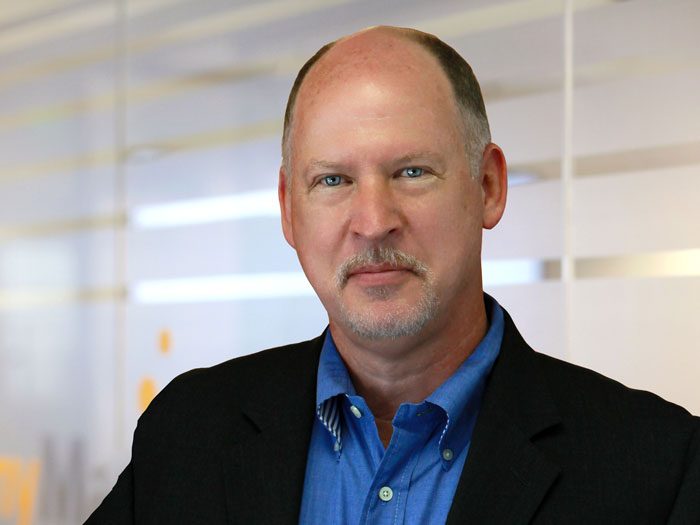myMatrixx’s Phil Walls Explains the Future of Drug Costs in Workers’ Comp

High drug costs can be a huge problem for workers’ compensation payers. While the industry is transitioning towards being able to utilize almost entirely generic drugs for its most common prescriptions, one claim with a specialty drug can drive up claims costs. Payers should also be monitoring unnecessary prescribing, which can take a routine claim out-of-hand.
At the 2019 National Workers’ Compensation and Disability Conference® & Expo, Phil Walls, chief clinical officer at myMatrixx will address high drug costs in workers’ comp with Will Franken, director of risk management at Seaboard Corp. in their breakout session, “The High Cost of Drugs and What to Do About Them.”
Walls sat down with Risk & Insurance® to discuss some of the key points.
Risk & Insurance: Why did you want to present on the high costs of prescription drugs at NWCDC this year?
Phil Walls: Drug prices have somewhat dominated the headlines for a period of time now. About this time four years ago, Turing Pharmaceuticals dramatically raised the price of Daraprim, a drug that may be life-saving for patients with AIDS. This dramatic price hike was equivalent to 5,000%, and people took notice. That’s the point in time when Hillary Clinton, Joe Biden, Donald Trump all started demanding that something be done about drug prices.
And here we are four years later.
I’ve watched what Congress is doing, and my takeaway has been that to have a CEO like Martin Shkreli, formerly with Turing Pharmaceuticals, testify before congress is little more than a walk of shame. They go, they do their testimony, they leave and nothing happens. While Congress has been slow to act, there are steps that any workers’ compensation program — or any health insurer these days — can take to reduce their drug expenses.
R&I: Why do you think prescription drug costs are a big issue for workers’ compensation right now? And how are these high costs affecting the industry?
PW: When it comes to reducing drug spend, one of the most effective strategies is to ensure you’re not paying for drugs that are unnecessary. That takes involvement; the payer has to be very committed. You may have to review each file one-by-one.
When you look at pharmaceutical care in workers’ compensation, you see something that we refer to as a prescription cascade. What this means is, a patient starts taking a drug, that drug causes side effects, they go back to the doctor, the doctor now prescribes a drug to treat those side effects, which in turn may cause additional side effects. You’ve just created a downward spiral that leads to increased prescribing and therefore, increased drug costs.
We see this happening in two populations — injured workers and senior patients. We want to work with prescribers and help them understand that prescribing another drug is not always the answer. Sometimes a better course of treatment is to discontinue a drug or simply lower the dose. If we can get that mindset going, we can stop these prescription cascades and, as I’ve seen on many, many occasions now, reverse that process. As soon as you get the patient off of one drug, those side effects go away and then those other drugs go away and their side effects go away.
This approach can easily be distinguished from denial of care, because it is simply a risk versus benefit decision — if the risk of continued drug therapy outweighs any benefit from continued therapy, then the drug should be discontinued or weaned as appropriate. However, if the benefit outweighs the risks, then the therapy should continue as long as this benefit exists. That alternative would not exist in a denial of care situation.
R&I: What are some of the prominent cost drivers of prescription drugs and are any of these specific to workers’ comp?
PW: With mainstream drugs, we’re seeing some clients approaching 100% generic utilization, meaning they’re no longer paying for high cost, brand name drugs.

Phil Walls, chief clinical officer, myMatrixx
That’s a huge home run for the workers’ comp industry. We recently saw the patent expiration of Lyrica, which treats nerve pain and had been frequently prescribed in workers’ comp. That was one of the last significant brand-name drugs in workers’ comp. Generic alternatives are now available.
Another significant brand-name drug is Oxycontin, and of course now Purdue Pharma is facing bankruptcy. So that brand-name status could go away as well.
What might the exceptions be? Well, exceptions are going to come in a few different places. One would be the specialty drug market. Specialty is not going to affect every workers’ comp payer, but it is going to affect those who insure certain populations: first responders, health care workers, police and firefighters, any jurisdiction that has either cardiac presumption or cancer presumption, and others.
That makes specialty interesting, because not all payers are going to feel the impact. Yet when they do, it only takes one claim that involves specialty drugs to entirely change that insurer’s pharmacy expenditures.
The other area, and this is very disturbing, is coming from physicians. For years, myMatrixx and others have been battling the unreasonable expense associated with compounding from pharmacies. In our drug trend report this year, we were able to report that compounds are no longer a problem for our clients.
But now ‘private labels’ are popping up — these physician-only topicals that are, in many cases, over-the-counter formulations. But because they’re being marketed exclusively to physicians or prescribers, they’re carrying outrageous price tags close to a couple thousand dollars.
That’s a huge price driver, and it’s one of those where there’s no clinical benefit to these drugs. I think our payers recognize they have to pay a high price to take care of a patient with HIV. They don’t understand why they have to pay a high price on something that is, in essence, no more effective than many inexpensive OTC formulations.
R&I: What are a few examples of strategies payers can use to manage rising costs?
PW: Number one, if you’re not doing so already, definitely engage a PBM. In this day and age, you need someone that has oversight over your entire drug spend. Make sure that the PBM is clinically driven.
Once you have that in place, work very carefully on developing a formulary. Many states are coming up with formularies right now, and I think that’s a good thing. I’m glad to see states taking that action. But I think there’s even more that can be accomplished with formularies than what we’re seeing.
Our approach to formulary management is to make sure our clients are in compliance with state formularies. Then we introduce them to a new formulary concept: phase of care. Our phase of care approach allows us to manage a client’s formulary uniquely for every claim based on the date of injury and the point in time of the claim to determine if a prior authorization is necessary. Our clients who have adopted this phase of care approach recognize immediately that what is appropriate right after an injury may not be appropriate six months later and vice versa. Therefore, acknowledging this change over time means less disruption for the injured patient at the pharmacy counter and less demand on the claims professional’s time.
The formulary strategy is step one. Then, we step back and look at all those drugs where the price is not justified. We have targets of drugs in this category where a simple intervention with the prescriber can get him or her to change to a less-costly alternative.
We’ve been very successful with that. We have about an 84% positive response from prescribers. We hear time and time again from the prescribers that they had no idea how expensive the drug was. They’re simply prescribing it because a sales representative came in and told them about it, not realizing they’re costing someone say $2,000 as opposed to $20.
R&I: Where do you see the prescription drug market heading over the next few years?
PW: I think the costs will continue to rise and the drivers will be a change in the strategy of the pharmaceutical industry. Even as recently as a decade ago, the pharmaceutical industry would focus on what they consider to be large markets. If they are developing a new therapy for diabetes, heart disease or arthritis, they’re going to have millions of patients in this country who are in need of those drugs. They’ve saturated that market.
Now, there’s very little to achieve there and in fact a lot of the new remedies coming out didn’t really represent a true clinical advance. So their change in strategy has been focused on the rare disease market. They’re now looking at conditions like Hepatitis C, rare forms of cancer, immune disorders and other conditions.
And kudos to them, they’re actually curing diseases we used to think were incurable. But because the number of patients is so much smaller, that means the price per drug is increasing dramatically. I predict that will continue.
I also predict that our industry can benefit from emerging technology known as pharmacogenomics, which allows us to look at a patient’s genetic makeup to predict how they’re going to react to a drug. As drugs become more expensive, we’re going to want somewhat of an assurance that they’re going to work. And we know from looking at genetic makeup of a patient whether or not certain drugs are going to be effective or not. I think it’s just going to be a matter of time before pharmacogenetic tests become the standard of care.
R&I: What is the main takeaway NWCDC attendees will gain from your session?
PW: The one takeaway I want them to leave with is this: Ask your pharmacist. If I had one wish, it would be that the claims professional community would take advantage of pharmacists. Call them up, ask them questions.
We can put all sorts of state-of-the-art clinical programs in place, but all it takes is one claims professional authorizing an unnecessary drug and all the benefits we’ve gained are lost.
Rely on the experts. Ask your pharmacist. &










